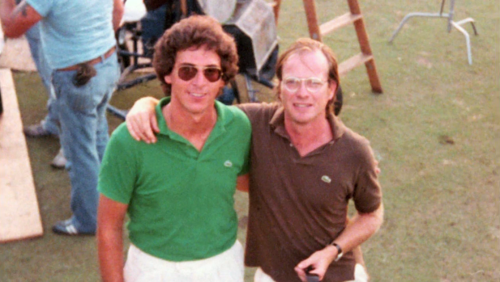It's Alright
I saw Caddyshack: The Making Of A Hollywood Cinderella Story in my library and checked it out. I can't imagine buying it since I don't like the movie much. At least author Chris Nashawaty admits the film was not well-received in its day, and only a modest hit. However, since then, it's become a cult classic, its lines quoted by millions.
The book itself, while well-researched and written in a lively manner, is full of padding. At about 250 pages of text, you've got to get past page 100 before you come to the actual making of the movie. Before then, Nashaway tells us the story of National Lampoon, Saturday Night Live and Animal House, which all lead up to Caddyshack. These are fascinating stories, but they've been told elsewhere at greater length.
Once he gets to the making of the movie, the book does paint quite a picture. This was a cocaine movie. The men behind it, particularly Harold Ramis (director and co-writer) and Doug Kenney (producer and co-writer), had created the blockbuster Animal House and so were given carte blanche, but while talented writers, they knew a lot more about getting high than making a major motion picture.
Ramis and Kenney, along with third writer Brian Doyle-Murray, were trying to tell a story about class struggle in a country club, with a central love triangle between two caddies and the young woman they fight for. But the script was too long and all over the place, Ramis--a first time director--didn't know how to structure things, and Kenney was mostly concerned with making sure his dealer delivered on time.
As opposed to Animal House, which had a funnier script, a director who knew how to stick to the story, and--even with numerous characters and episodes--a core about the underdogs versus the snobs that was central to the plot, Caddyshack spun off in all directions. Especially since the stars--and the studio demanded stars--Chevy Chase, Bill Murray, Rodney Dangerfield and Ted Knight--were playing what were essentially background characters.
After a chaotic shoot, Ramis and Kenney went into the editing room and came out with a disastrous four-and-a-half-hour rough cut. There was funny stuff, but it didn't hang together. Editors were hired to sculpt it into something, and producer Jon Peters helped "save" the film by seeing to it they shot more material to emphasize the gopher subplot. And, needless to say, the big names were emphasized and the central story moved more into the background.
It's a sign of how far the film changed that the original had a final scene where the main caddy flies away on an airplane into his future, while the finished version has Dangerfield, out of nowhere, saying "Hey, everybody, we're all gonna get laid!"
Kenney, who felt the film had been taken away from him (not unlike how he felt about Animal House) was disconsolate. At a promotional press conference he denounced the film and attacked the critics before passing out. Soon after its release he flew to Hawaii and, apparently in an accident, fell off a cliff and died.
But, in an age of home video, the film lived on. People could replay the little bits that they loved over and over (and ignore the boring caddy plot). It became a "classic" without being very good. Not that there's no funny stuff. Though Murray and Dangerfield get the most attention, I think this film captures the comic side of Chevy Chase that he showed on SNL better than any other film. But let's stop pretending it's anything other than a fitfully entertaining movie.




0 Comments:
Post a Comment
<< Home